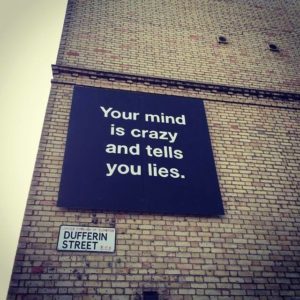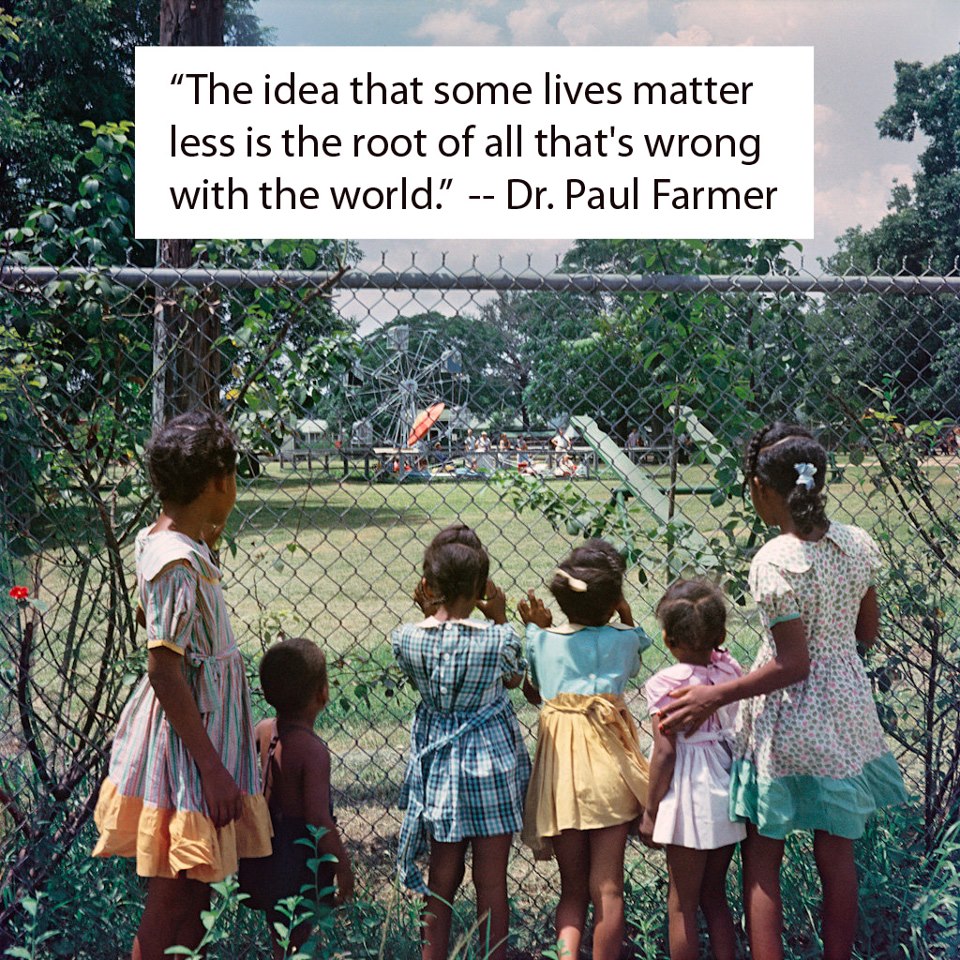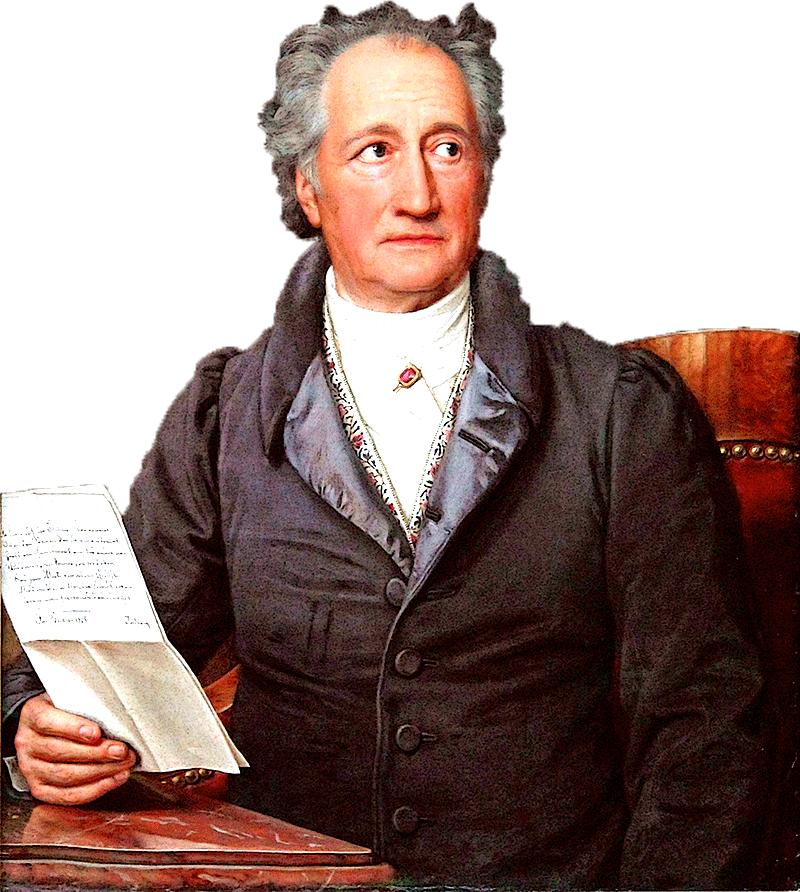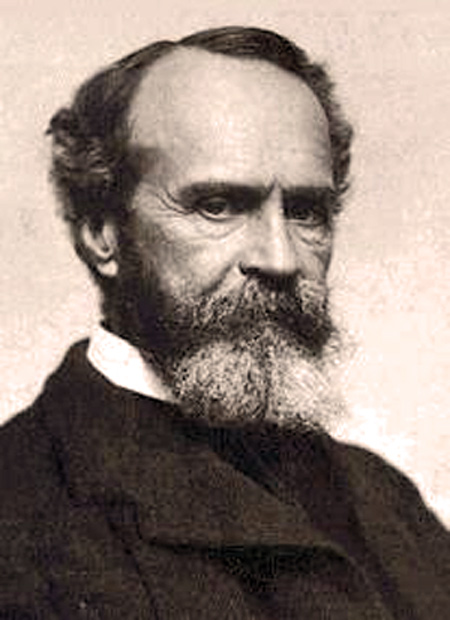Philosophy
Concerning philosophy by school, by behavior, by implication or as a meme.
“In this house, we believe science is real.”
— That Sign
Science is this job:
- Make an observation.
- Ask a relevant question.
- Form a hypothesis or testable explanation.
- Make a prediction based on the hypothesis.
- Test the prediction.
- Have your test and its results peer-reviewed and replicated by other scientists.
- Confirm that those results are statistically meaningful and consistent
- Iterate (repeat): And use the results to make new hypotheses or predictions.
This is the creation process for scientific facts. This process produces the “Proof” of science that we believe in, due to the rigorous method of science. This value only exists in results that have verifiably completed every step in this process.
A fact can only be a scientific fact if it owes its existence to the scientific method. Concerning every other subject on earth, science is objectively not even relevant. What science isn’t is an essential aspect of understanding what it is. Or you might say that concerning any other subject on earth… science doesn’t even exist because Science only exists in this process.
There are absolutely loads of facts that are meaningful, important, and objectively true but have no connection to science at all. There are crazy shit tons of facts that are beautiful, or scary, or somewhat but not completely true. There are another insane amount of facts that are subjective, personal, and anywhere from sort of to mostly untrue objectively.
Then there are ideas, so many millions of them, that generally rest on some awkward constellation of cherry-picked examples from any sort of combination of the proceeding facts, including the scientific ones. These cannot prove or disprove whatever the cherished idea is, they are there as character witnesses called to testify in the case. Their impact on the jury is generally emotional or an appeal to existing assumptions.
The only aspects of science that even call for belief are the method itself, and the unambiguous results (when present) of that applied method. But please remember that not all scientific facts are equal. Unambiguous, repeatable results are high-quality scientific truth, 5-star scientific facts, whereas ambiguous, hard to repeat results are low-quality knockoffs coasting on the reliability of high-quality results.
You should believe that science is real, where and when this process is complete. Including unambiguous and replicable. Any fact NOT born of the scientific method is not a scientific fact. And some facts that are scientific by following the method are nonetheless preliminary, inconclusive, and unreliable.
Everything else is either data, opinion, or speculation. There is nothing wrong with data, opinion, or speculation but none of these are conclusive and none are scientific.
So please remember this, if a scientist speaks of spirituality, mysticism, religion, the meaning of life, etc. They are officially just another shmoe like all the rest of us, with no more credentials than any of the rest of us, and they deserve no more trust or belief than anyone else does.
Scientists speculating beyond hard data they are well informed about are ethically wrong if they are asserting (even tacitly ) any scientific authority. They are abandoning the scientific method, violating the principles that make it meaningful, being dishonest, and committing a famous logical fallacy: The “Appeal to False Authority”.
This is no insult to science. We can properly celebrate the amazing power of science only by remembering its limits as well as its strengths. Remembering these limits renews the simple, solemn pact science has made to us. A promise to adhere to the very terms and conditions that it uses to define itself.
The act of eventually telling the truth about something bad and shameful is an interesting bargain.
We willingly exchange the state of being a worse person who is seen as better one, for the state of being a better person, who is seen as a worse one.
That is, we go from being an immoral person whom everybody trusts, to a moral person who everybody condemns and scorns.
We downgrade our reputation and suffer social losses for the deeply soulful result of living in truth once again.
There is something about living a lie that is a bit like holding your breath underwater or going around caked in dirt no one else can see. It’s pure relief then, simply to breathe or finally get clean.
The outrage people feel, on learning they were lied to, is also interesting.
I want to clarify what harm was done.
A lie places the victim in a false location. They are lost but they don’t know it. The lie supplies them with a broken compass and a map of someplace they are not.
A lie steals their autonomy and volition to choose for themselves and assert their will. It prevents self-defense. A lie is a way to lead someone around on a leash.
A lie, when revealed, repudiates ALL those moments when it seemed… but only seemed, that we were loved. It retroactively pollutes and poisons them all, even the ones where maybe we actually were loved.
A lie exposed reveals our true value to the liar: Convenience, not treasure. An assistant, not a partner.
While the lie was believed, it gradually became the same thing as our life: A life now partially made of toxic, low grade materials.
It’s terrifying to consider.
They might as well have thrown us in a sack, driven us far away, and left us there, calling out to them in growing alarm.
“Through all ages men have tried to fathom the meaning of life. They have realized that if some direction or meaning could be given to our actions, great human forces would be unleashed. So, very many answers must have been given to the question of the meaning of it all. But they have been of all different sorts, and the proponents of one answer have looked with horror at the actions of the believers in another. Horror, because from a disagreeing point of view all the great potentialities of the race were being channeled into a false and confining blind alley. In fact, it is from the history of the enormous monstrosities created by false belief that philosophers have realized the apparently infinite and wondrous capacities of human beings. The dream is to find the open channel.
What, then, is the meaning of it all? What can we say to dispel the mystery of existence?
If we take everything into account, not only what the ancients knew, but all of what we know today that they didn’t know, then I think that we must frankly admit that we do not know.
But, in admitting this, we have probably found the open channel.”
Richard Feynman
Life can only be understood backwards; but it must be lived forwards.
Soren Kierkegaard
The way we understand the past is the way we understand the future. The future is lit indirectly, by imagination, as if by moonlight.
Perception cannot escape the relativity of POV. Every story can be traced back to its author and their personal story. Every background has a background. Every measurement suppresses or ignores other measures in order to capture its sample of reality. Every given limits what can be given as it dutifully fulfills its own prophecy. Continue reading
Science is a Gas Giant.
I don’t mean anything disparaging by that. It’s a mental model to freshen up our thinking.
The unequivocal territory of science is the sum of theories plus experiments that have unambiguous, replicable results. This body of knowledge is the diamond-hard core at the heart of science. There are a lot of physics and chemistry experiments here. They seem to know their parts by heart.
Just beyond the border of that core, the gas atmosphere begins but it is nearly as hard as the core itself. It’s a long, dense gradient from here to the wispy edge of the atmosphere that is literally made of thin clouds under scattered atoms and space. Close to the core, the experiments are as replicable as the day is long when you average them out. There are enough squishy, stochastic details here that any random experiment might say something new, but not useful. The ambiguous results are overwhelmed by un-ambiguous ones like a single black grain in a bag of white rice.*
Heading outward, the variables faced by theorists get more complicated and slippery. If the questions science aims to answer were pickle jars, we’d crack them open without a beat at the core, struggle with rubber gloves and screwdrivers around the middle, and create thought experiments about jars and pickles at the foggy upper edge. Your thought experiment may perfectly predict opening the jar, and what’s inside but it’ll be a long time before anyone gets a pickle. Continue reading
“The greatest hazard of all, losing one’s self, can occur very quietly in the world, as if it were nothing at all. No other loss can occur so quietly; any other loss – an arm, a leg, five dollars, a wife, etc. – is sure to be noticed.”
―Søren Kierkegaard

 “The unmotivated seeing of connections” accompanied by a “specific experience of an abnormal meaningfulness”. — Klaus Conrad
“The unmotivated seeing of connections” accompanied by a “specific experience of an abnormal meaningfulness”. — Klaus Conrad
More simply, Apophenia is seeing connections and meaning in data because we want it to be there, not because it really is.
3 Forms of Apophenia:
- Confirmation bias – From a background of randomly distributed items; associating items that have no connection except that they fit the story you are already telling yourself.
- Rejection bias – Ignoring or denying information that DOESN’T fit the story you are telling yourself.
- Pareidolia – (less impactful, but related) A sensory stimulus that is interpreted by the mind as something else. For example, being in the shower and in the sound of the running water, you keep thinking you hear your phone ringing. It is also, the faces we see in teapots, trucks, and clouds. It is seeing Jesus on a piece of toast, or a happy dog face in random shadows and light.
However, I think rejection bias “piggy-backs” on confirmation bias and is more like an implicit corollary than a different category. And Paradolia is more like the confirmation bias of the senses which may or may not be taken seriously. If it is taken seriously and defended, is it has turned into garden variety confirmation/rejection bias.
One classic example of confirmation bias is a gambler, excitedly seeing meaningful patterns in random information and sensing a coming streak of good luck based on nothing real. But interpersonal confirmation bias is very common and typically awful for both parties. I once had a painful encounter with this in myself, in a social situation where I consistently misunderstood social signals until I lost a friend. It’s shocking how compelling and believable your own apophenia can be. The dawning realization of having been completely wrong and completely certain is mortifying but also frightening: You’ve been out of touch with reality, and you were not in a relationship with another person, just yourself and your dream. How can you feel sure of any footing once you’ve led yourself to disaster? “Fool me once, shame on you, fool me twice, shame on me.” but in this case, all the fooling and all the shaming is on me. Damn it, brain. I suspect this sort of apophenia correlates strongly to an emotional need for comfort. It’s an opium-like form of self-reinforcing belief that takes away the pain even as it sets you up for more.
The most basic survival need for any organism is to recognize the meaningful information and patterns around it. A little anomaly in the shadows of a bush might mean a tiger. A twinkle of a certain color in the distance could be fruit. If a sudden unexpected sound or movement puts you on alert it means your copy of this software is up and running. The neurology of patterns and meanings is essential from raw survival to subtle nuances of communication. There are patterns to be recognized in faces, voices, and body language: There are patterns in the weather and in the nightly news. This function is our guardian and navigator in everything we do. Discerning the signal from the noise is the foundation of being in touch with Reality. This isn’t Apophenia, this is pattern recognition.
Apophenia is the name given to this sense of pattern and meaning at the point that we become partisan and embellish our subjective perception, emphasizing the preferred meaning of a pattern.
There is a healthy version of Apophenia and a toxic version. Healthy Apophenia is generally invisible because it creates no (serious) conflict with reality. Almost everyone’s spiritual and political beliefs are healthy Apophenia. Not healthy in the sense of highly recommended, more like not poisonous. Toxic Apophenia can be viewed as a spectrum disorder because it emerges directly out of these same essential brain functions but as beliefs that war with the outside world.
I’ll use the example of Autism as a spectrum disorder for comparison.
All of us fit somewhere on the Autism spectrum. This does not mean we are all autistic, just that autism can only be measured and described in contrast to “Not Autism”. We have our personal “settings” for all the well-known issues of ASD people such as sound sensitivity, dislike of eye contact, social deficits, etc. We might be socially warm, making intimate eye contact, and not at all bothered by noise but we are on the same spectrum or there would be no contrasting perception describing Autistic behavior. What makes a person “Autistic” is the degree to which their personal settings cause friction with the “normal” world. We stop calling people Autistic when the friction is mild enough that a diagnosis isn’t necessary. This is simply where we stop measuring the spectrum, not where the spectrum stops.
Toxic Apophenia is recognizable friction between OUR reality and REALITY itself. It is a meaning disorder. It is the dangerous stalker or the unstable zealot.
If we have any kind of subjective outlook on life, we have a case of high-functioning apophenia. Subjectivity and “reality favoritism” are unavoidable because to have any point of view, we highlight certain data points in the world as more meaningful than others. We prefer these data points. They support the narrative. Of course, there is no absolute objective reality that we could all be perfectly in touch with. Significantly, THAT belief (in one real truth) is a common symptom of toxic apophenia. A properly functioning person is loaded with biases and subjectivity. A bit of Apophenia is universal and we can consider it part of our homeostasis. It’s part of how we have a fix on our personal life and beliefs. If it means we gloss over a few discrepant facts or get into some arguments, there’s usually no serious price to pay. A bit of friction is just human background noise.
In more serious Apophenia, beliefs become obsessive. Not because the person simply has bad information, because that bad information takes root and grows disproportionately important, inflexible, and unquestionable. Mistakes aren’t corrected, they are defended. Apophenia almost behaves like an allergic response; eventually, any truth outside the story is treated as antigen. It is an inflammation of belief. That belief becomes our prime motivator, a terrible advisor, and somehow, an essential part of our self-definition. It shows up as an opportunistic infection alongside addiction and co-dependency. It is dogmatic and generates black and white stories. Often it is a willful rejection of any relationship to others, becoming a protective wall around mono or megalomania. Apophenia is the mechanism and the very foundation of conspiracy politics. Viral memes and vulnerable people are the breeding ground.
Examples of Hot Zone Apophenia:
- Stalkers: Celebrity or otherwise. A false story of romance is woven into an obsession and the focal person must be forced to recognize it.
- Religious Extremists: A religious map of reality becomes more real than the daily world. In the worst cases, the world must be forced to recognize it.
- Conspiracy theorists: A weird idea becomes a raison d’etre. A monomania.
- Racists: Everything becomes about “The Jews”, or “The blacks” ad-nauseam.
- Ultra-Nationalists: It starts with culture appreciation day and ends with ethnic cleansing.
Notice how isolated they all are. In some cases, a natural group of “new best friends” comes with the obsession. Unfortunately here, a like-minded community only reinforces the seeming importance and truth. All backs are turned against the outside world and all its damned lies. As the levels of obsession rise, barriers of acceptable behavior are knocked aside. In the worst-case scenario, there is a literally terminal stage when violence and self-destruction occur. These are people it is hard to feel compassion for because they all display unpleasantness or worse but my gut tells me that way back when the obsession is just a tiny glimmer, coming into being, that hopelessness, loneliness and a desperate need for meaning are the sparks that start the fire. The new obsession arrives feeling like a lifeboat, like a rescue, like an escape to a safe place. Much like serious depression, it cuts the person off from the world and rejects opposing views. For many with serious Apophenia, the story leading to their downfall must feel like an answered prayer and a reason for living.
All these people are desperately filling a painful void with a poison that they have mistaken for an antidote. In apophenia, you don’t hold the belief, the belief holds you.

“We do not have to visit a madhouse to find disordered minds; our planet is the mental institution of the universe.”
“When we treat man as he is we make him worse than he is. When we treat him as if he already was what he potentially could be, we make him what he should be.”
“I find the great thing in this world is, not so much where we stand, as in what direction we are moving.”
“Until one is committed, there is hesitancy, the chance to draw back, always ineffectiveness. Concerning all acts of initiative (and creation), there is one elementary truth the ignorance of which kills countless ideas and splendid plans: that the moment one definitely commits oneself, the providence moves too. A whole stream of events issues from the decision, raising in one’s favor all manner of unforeseen incidents, meetings and material assistance, which no man could have dreamt would have come his way.”
― Johann Wolfgang von Goethe

William James was an American philosopher and psychologist, and the first educator to offer a psychology course in the United States. James was a leading thinker of the late nineteenth  century, one of the most influential U.S. philosophers, and has been labeled the “Father of American psychology”. Among his most influential books are The Principles of Psychology, which was a groundbreaking text in the field; Essays in Radical Empiricism, an important text in philosophy; and The Varieties of Religious Experience. He coined the phrase “stream of consciousness” to describe the experience of the mind. He made an enormous contribution to understanding human behavior and to making psychological practice more pragmatic and empirically based. If there were “Baseball cards” for daring, dedicated and original thinkers, he would be Lou Gehrig. The linked article is a fun overview of his life and work. The Thinker Who Believed in Doing.
century, one of the most influential U.S. philosophers, and has been labeled the “Father of American psychology”. Among his most influential books are The Principles of Psychology, which was a groundbreaking text in the field; Essays in Radical Empiricism, an important text in philosophy; and The Varieties of Religious Experience. He coined the phrase “stream of consciousness” to describe the experience of the mind. He made an enormous contribution to understanding human behavior and to making psychological practice more pragmatic and empirically based. If there were “Baseball cards” for daring, dedicated and original thinkers, he would be Lou Gehrig. The linked article is a fun overview of his life and work. The Thinker Who Believed in Doing.
His theory of Self proposed that there are 4 distinct parts:
“The Constituents of the Self may be divided into two classes, those which make up respectively (a) The material Self; (b) The social Self; (c) The spiritual Self; and (d) The pure Ego.”
My focus here is his model of the Social Self which resembles my model of The Third Mind. The following is edited for relevance from his The Principles of Psychology:
“…Properly speaking, a man has as many social selves as there are individuals who recognize him and carry an image of him in their mind. To wound any one of these his images is to wound him. But as the individuals who carry the images fall naturally into classes, we may practically say that he has as many different social selves as there are distinct groups of persons about whose opinion he cares. He generally shows a different side of himself to each of these different groups. Many a youth who is demure enough before his parents and teachers, swears and swaggers like a pirate among his ‘tough’ young friends. We do not show ourselves to our children as to our club-companions, to our customers as to the laborers we employ, to our own masters and employers as to our intimate friends. From this there results what practically is a division of the man into several selves; and this may be a discordant splitting, as where one is afraid to let one set of his acquaintances know him as he is elsewhere; or it may be a perfectly harmonious division of labor, as where one tender to his children is stern to the soldiers or prisoners under his command.
The most peculiar social self which one is apt to have is in the mind of the person one is in love with. The good or bad fortunes of this self cause the most intense elation and dejection …unreasonable enough as measured by every other standard than that of the organic feeling of the individual. To his own consciousness he is not, so long as this particular social self fails to get recognition, and when it is recognized his contentment passes all bounds.”